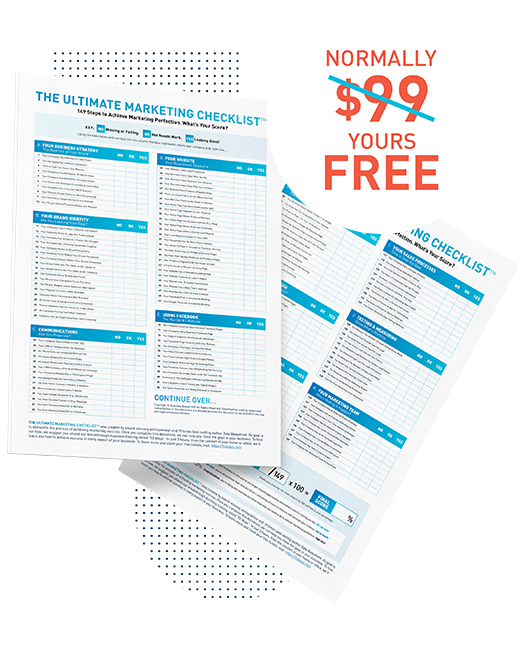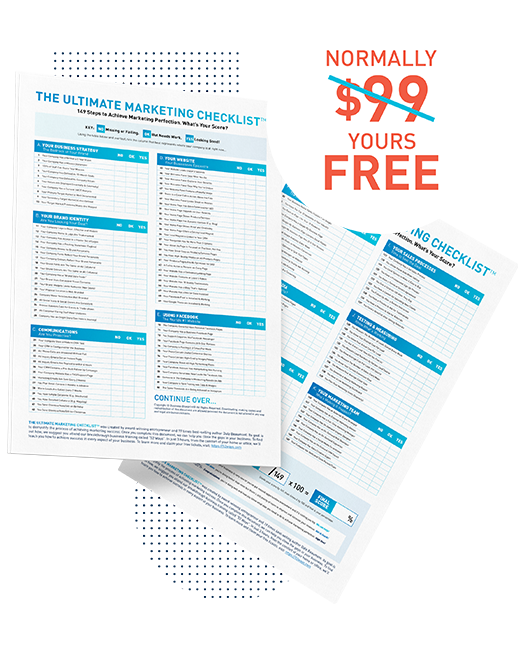Ever heard of business intelligence?
No, it’s not about how “smart” your business is, but is more about the information that is ‘held’ within your business.
Business intelligence turns your dense, unreadable data into knowledge to help you make informed decisions.
When you track your business intelligence, you can take objective measurements, reveal problem areas, make calculated improvements and see your business numbers in real-time.
Take a look at how to automatically gather business intelligence and use it for instant insights, as shared by Blueprint presenter Andrew Wadsworth:
Business Intelligence requirements
To keep track of your business intelligence, you need the following:
- Data to be interpreted
- Analysis of the data
- Presentation of the data to help make decisions
There are a number of different ways of collecting data, for example from your financial software, or from Google Analytics, which tracks the clicks which come to your website. The data you have can be transferred manually or automatically (preferably) to go into a business intelligence dashboard.
The Business Intelligence Dashboard
A Business Intelligence dashboard is like the one on your car. It lets you see everything you need to know at once.
By bringing in all three requirements of business intelligence, your dashboard simplifies complex data so you can see your performance at a glance. You can also set it up to compare real figures with projections or KPIs.
When well designed, your business intelligence dashboard is a remarkable tool for managing marketing and other areas of your business.
What to include on your Business Intelligence Dashboard
Your business intelligence dashboard can be Analytical or Operational.
Your analytical dashboard lets you see trends and patterns, such as which demographics visit your website or how much time they spend browsing.
You can set filters to create comparisons and get a bird’s eye view of how your business is tracking, which areas need attention and what is performing well.
Analytical dashboards tend to track long-term data and tie in with your strategy and long-term goals.
An operational dashboard tends to be a screen people look at daily so they can see things like staff performance, how far a project has come etc. This is more commonly used by people who work within the business who are focused on more short-term objectives.
If you’re struggling to visualise what your dashboard could look like, think of a fitness report from an Apple Watch or Fitbit app. You can see daily targets, understand when they have been reached and identify the causes behind significant changes.
Xero is another piece of software which leverages intelligence dashboards. Log in and you can instantly see how much your business is owed, which bills need paying and how much cash has been coming in and out each month.
Key Features of a Dashboard
Your Business Intelligence dashboard should have the following:
Tables – these give more detail but needs a while to analyse what’s going on in that table
Bar charts – great for breaking down different filters such as viewing revenue by product sources
Line charts – so you can see your targets and progress over time
Gauges – most convenient, since you can quickly look at a gauge to see your target and see how close you are to reaching that target
Four tips for creating dashboard gauges
These will help you create your dashboard so it shares the right business intelligence:
1) Use targets – set targets to help you understand where you’re actually tracking to
2) Use colour indicators – example Green-almost/goal achieved Yellow-Danger or critical Red-absolutely failing
3) Show comparisons- between periods ex. monthly, quarterly, yearly, etc.
4) Give detailed summaries- make sure you and your staff or team understand what it’s all about
Business Intelligence Dashboard Software
Fortunately, you don’t need to invent software to have a business intelligence dashboard, or even pay thousands upfront.
Some of the options you can sign up for and connect your cloud-based systems to include:
- Sisense
- Klipfolio
- iDashboards
- Tableau Software
- Google Data Studio
- Geckoboard
Use your dashboard to help your business
Having numbers is great but you do have to use them. Applying what your dashboard shares to your business is the final part of the business intelligence puzzle.
For example, you can use your dashboard to:
- Drive fact-based, real-time decision making
- Make data more valuable
- Consolidate data and reports
- Provide an objective view of performance
- Reveal problem areas
This tool also comes in handy for sharing team updates and reporting to your board.
We really hope that these tools can help you get control of your data and make your business truly intelligent.




